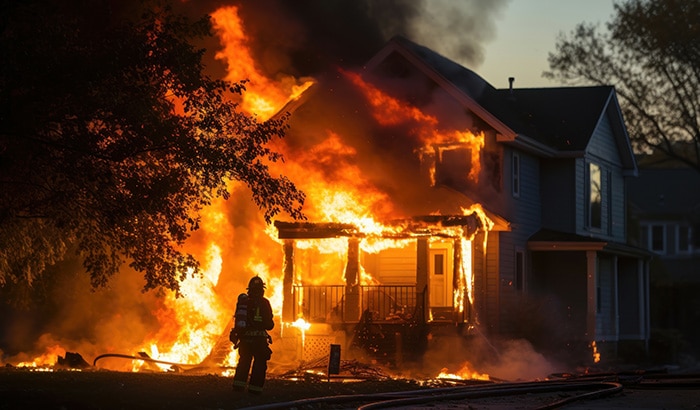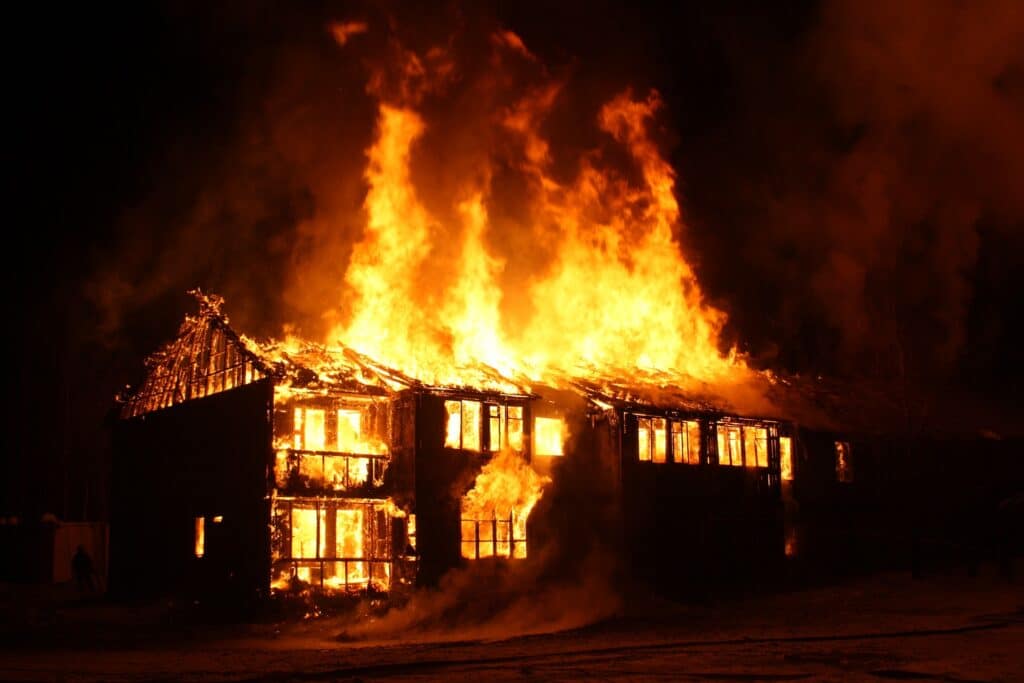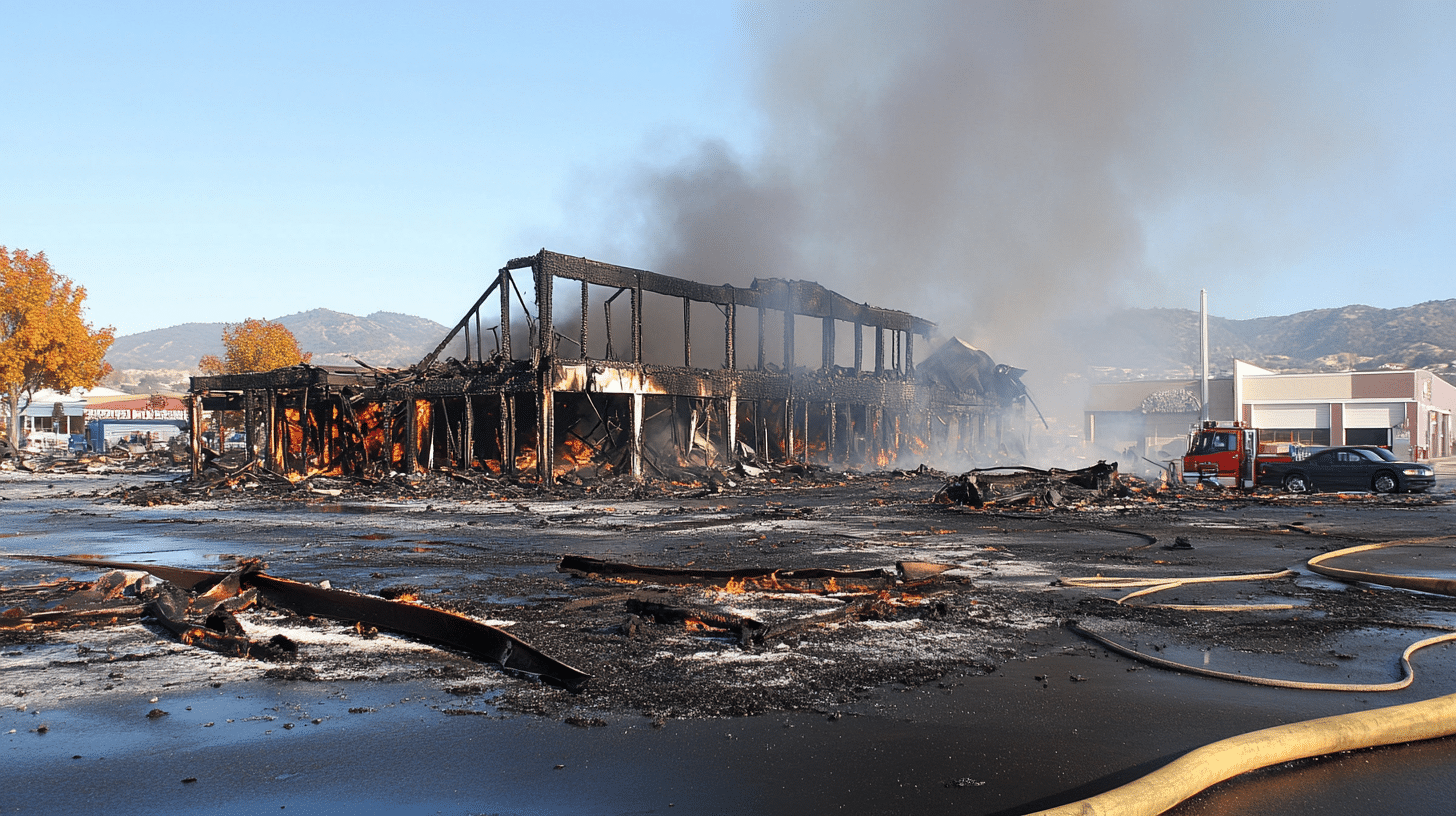Many homeowners don’t realize that hidden smoke and soot damage from a house fire can lead to significant financial losses. These often get missed when filing fire damage insurance claims.
Insurance companies must respond to claims within 15 days, but the process is nowhere near simple. You’ll need to document every detail of the damage and know your coverage rights to file a successful claim. The stakes become exceptionally high when you have mature trees worth $5,000 and extra living expenses to think about.
The whole process can feel overwhelming. We created this detailed guide to help direct you through your fire insurance claim process. You’ll learn how to maximize your settlement and avoid costly mistakes that could set you back thousands. Let’s head over to what you should know to protect your interests and get compensation.
Understanding Your Fire Insurance Coverage Rights
Standard fire insurance policies protect you against losses from fire, smoke, and related damages. These policies cover direct fire damage and losses from smoke, water used in firefighting, and repairs that need to be done.
Types of Fire Damage Claims Covered
Your fire insurance policy covers damages from fires of all sources. This includes faulty wiring, electrical issues, gas explosions, and natural disasters like lightning strikes. The policy also covers damages from smoke and water firefighters use to extinguish the fire.
Hidden Damage You Can Claim
Your policy covers several types of hidden damages that need professional inspection beyond what you can see:
- Structural steel and concrete damage from extreme heat
- Water damage behind walls and under floors
- Smoke infiltration in HVAC systems and wall cavities
- Plumbing system damage from melted pipes
Time Limits and Policy Requirements
Insurance companies need written notice right away if you have any loss. You must submit a detailed statement within 60 days that shows your insured property’s value and explains how the fire happened. The insurance company has 60 days from your policy’s start date to check the rating and underwriting of a new policy.
Your insurance company must pay you 60 days after you submit proof of loss documents and agree on the settlement amount. If you can’t agree on the actual cash value or loss amount, you and the insurance company must each pick a qualified appraiser within 20 days after a written request.
Documenting Fire and Smoke Damage Effectively

Proper documentation of fire damage is vital evidence for your insurance claim. Your settlement outcome depends on how well you record the damage.
Creating a Complete Damage Inventory
Start a detailed room-by-room inventory once you get clearance to enter your property. List everything the fire affected, from structural elements to personal belongings. Make a catalog of each item with descriptions, estimated values, original purchase dates, and receipts if you have them.
Photo and Video Documentation Best Practices
Your fire damage insurance claim needs solid photographic evidence. Here are the key documentation guidelines:
- Take wide-angle shots of entire rooms for overall context
- Get close-up photographs of specific damages
- Show items from multiple angles to capture complete damage
- Get smoke and soot patterns on walls and ceilings
- Take photos of all entry points and their condition
Professional Damage Assessment Reports
Professional assessment adds credibility to your claim. Qualified experts should review both visible and hidden damages, including structural integrity, smoke infiltration, and potential water damage caused by firefighting efforts.
Suppose firefighting foam, such as AFFF (aqueous film-forming foam), was used. In that case, assessors should also test for contamination by PFAS, a group of “forever chemicals” linked to cancer, immune system effects, and other health risks.
PFAS contamination can seep into soil and groundwater, posing long-term threats to health and the environment. AFFF lawsuit settlements depend on the severity of health conditions. In 2025, severe cases may result in settlements ranging from $200,000 to $500,000. Moderate cases typically settle between $150,000 and $280,000, while less severe cases may lead to up to $75,000 payouts.
Professional assessors can spot less apparent damages you might miss, such as chemical residues or moisture in hard-to-reach areas. Their detailed reports include moisture readings, thermal imaging results, and damage analysis. These experts also provide estimated repair costs and recommended restoration procedures that help during claim negotiations.
Keep copies of all assessment reports, photographs, and inventory lists in digital and physical formats. These documents are the foundation of your insurance claim, so store them safely.
Maximizing Your Fire Insurance Claim Settlement
You need strategic negotiation skills and deep knowledge of the claims process to get maximum compensation for your fire insurance claim.
Negotiation Strategies with Insurance Adjusters
Insurance adjusters start negotiations at 50-75% of their authorized settlement amount. You should not accept their first offer. Instead, prepare a counteroffer backed by detailed documentation. Your communication should stay professional as you stand firm on your rights.
Smart negotiation moves include requesting itemized explanations of disputed amounts and securing written settlement offers. Adjusters might say “Everything needs approval from higher-ups” – this serves as their negotiation tactic.
Getting Fair Value for Smoke Damage
The cost of smoke damage restoration ranges between $3,000 and $35,500. These often-overlooked costs deserve attention in smoke damage calculations:
- Thermal fogging treatment: $550 to $1,550
- Ozone treatment: $400 to $1,800
- Soot removal: $4,500 to $15,000
- Chemical damage remediation: $1,500 to $17,500
Smoke can spread through HVAC systems and wall cavities, which leads to extensive hidden damage that needs professional assessment. Insurance companies must act in good faith and reasonably explain denials or underpayments.
When to Hire a Public Adjuster
Claims above $10,000 might benefit from a public adjuster’s help. Public adjusters charge 9-15% of the settlement amount. Notwithstanding that, their expertise leads to payouts that are by a lot higher. They care for documentation, policy interpretation, and negotiations while you concentrate on recovery.
Research shows that public adjusters secure larger settlements than policyholders who negotiate alone. They know insurance company tactics well and can counter low offers effectively with proper documentation.
Avoiding Common Fire Claim Pitfalls

Fire insurance claims can be tricky to navigate. You need to understand several significant differences that affect your settlement.
Understanding Actual Cash Value vs Replacement Cost
Actual Cash Value (ACV) policies take depreciation away from repair or replacement costs based on age and condition. RCV (Replacement Cost Value) coverage works differently. It gives you money to repair or replace damaged property at current market prices without considering depreciation. RCV policies offer you more complete protection, but you’ll pay higher premiums.
Preventing Claim Underpayment
Insurance companies want to pay as little as possible on claims. Here’s how you can protect your interests:
- Keep records and receipts of emergency repairs
- Get estimates from independent contractors to compare costs
- Keep detailed records of extra living expenses
- Ask for clear explanations about coverage limits
- Use a dedicated diary to track all communications
Dealing with Claim Denials
Insurance companies often deny claims in specific situations. When your claim gets rejected, you should act fast. Start by getting a written explanation that points to particular policy language supporting the denial. Then, collect supporting documents, including professional assessments and repair estimates.
You can file a complaint with your state’s insurance department if you think the denial isn’t fair. Public adjusters are a great way to get help in challenging denials. They usually charge 9-15% of the claim settlement. Their knowledge guides you toward higher settlements, especially with complex claims.
Note that you must keep paying insurance premiums even after filing a claim. This helps maintain your coverage and liability protection. Don’t rush into settlements – insurance companies often try to close claims quickly when disasters affect many people.
Conclusion
Filing insurance claims for fire damage needs close attention and a complete understanding of the process. You can get fair compensation for your losses with proper documentation, wise negotiation, and knowing what to watch out for.
The key to success is quick action right after the fire. Your position becomes stronger during negotiations when you have detailed photos, expert assessments, and complete lists of damaged items. On top of that, knowing the difference between actual cash value and replacement cost coverage helps you avoid getting less than you deserve.
Smart negotiation combined with solid documentation leads to better results. Public adjusters can be valuable partners for complex claims, especially when losses are over $10,000. Their expertise often brings higher settlements, making their 9-15% fee worthwhile.
Note that insurance companies have strict deadlines and must act in good faith. When you know your coverage rights, what documents you need, and common mistakes to avoid, you’re better prepared to direct your fire damage claim to success. Keep your eyes open, track everything carefully, and don’t jump into quick settlements that might shortchange you.

